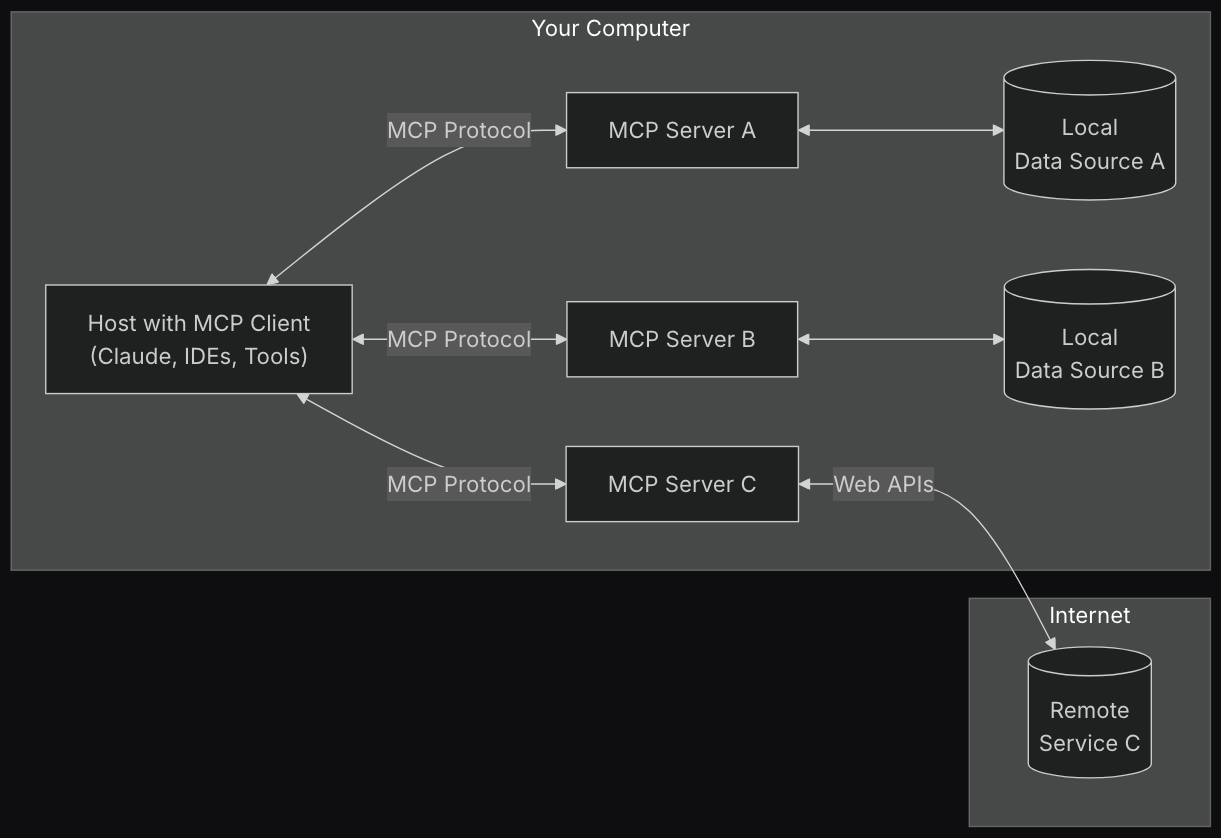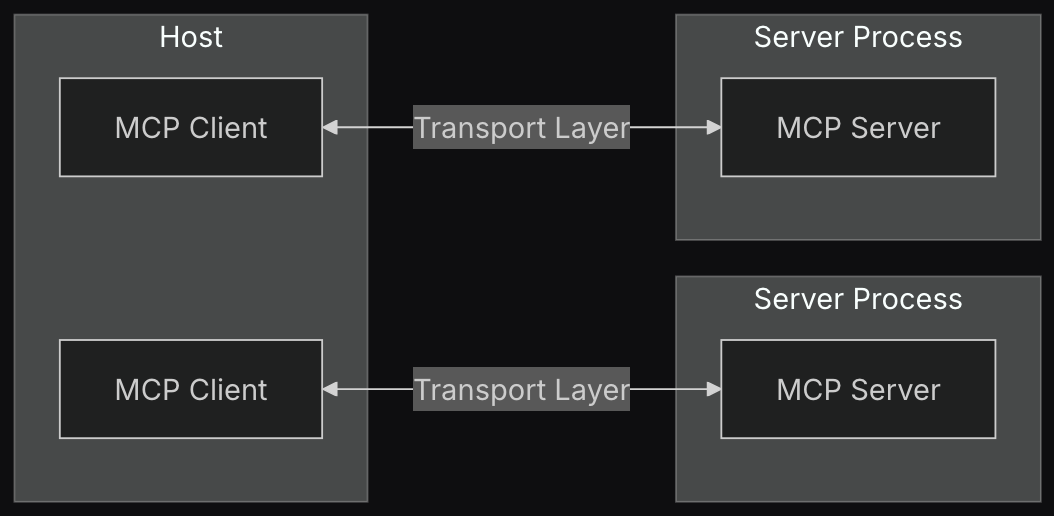MCP is an open protocol that standardizes how applications provide context to LLMs. Think of MCP like a USB-C port for AI applications. Just as USB-C provides a standardized way to connect your devices to various peripherals and accessories, MCP provides a standardized way to connect AI models to different data sources and tools.
General architecture
At its core, MCP follows a client-server architecture where a host application can connect to multiple servers:

- MCP Hosts: Programs like Claude Desktop, IDEs, or AI tools that want to access data through MCP
- MCP Clients: Protocol clients that maintain 1:1 connections with servers
- MCP Servers: Lightweight programs that each expose specific capabilities through the standardized Model Context Protocol
- Local Data Sources: Your computer’s files, databases, and services that MCP servers can securely access
- Remote Services: External systems available over the internet (e.g., through APIs) that MCP servers can connect to
Core architecture
The Model Context Protocol (MCP) is built on a flexible, extensible architecture that enables seamless communication between LLM applications and integrations.
MCP follows a client-server architecture where:
- Hosts are LLM applications (like Claude Desktop or IDEs) that initiate connections
- Clients maintain 1:1 connections with servers, inside the host application
- Servers provide context, tools, and prompts to clients

Protocol layer
The protocol layer handles message framing, request/response linking, and high-level communication patterns.
class Protocol<Request, Notification, Result> {
// Handle incoming requests
setRequestHandler<T>(
schema: T,
handler: (request: T, extra: RequestHandlerExtra) => Promise<Result>,
): void
// Handle incoming notifications
setNotificationHandler<T>(schema: T, handler: (notification: T) => Promise<void>): void
// Send requests and await responses
request<T>(request: Request, schema: T, options?: RequestOptions): Promise<T>
// Send one-way notifications
notification(notification: Notification): Promise<void>
}Transport layer
The transport layer handles the actual communication between clients and servers. MCP supports multiple transport mechanisms:
-
Stdio transport
- Uses standard input/output for communication
- Ideal for local processes
-
HTTP with SSE transport
- Uses Server-Sent Events for server-to-client messages
- HTTP POST for client-to-server messages
All transports use JSON-RPC 2.0 to exchange messages. See the specification for detailed information about the Model Context Protocol message format.
Message types
MCP has these main types of messages:
- Requests expect a response from the other side:
interface Request { method: string; params?: { ... }; } - Results are successful responses to requests:
interface Result { [key: string]: unknown } - Errors indicate that a request failed:
interface Error { code: number message: string data?: unknown } - Notifications are one-way messages that don’t expect a response:
interface Notification { method: string; params?: { ... }; }
Connection lifecycle
Initialization

- Client sends
initializerequest with protocol version and capabilities - Server responds with its protocol version and capabilities
- Client sends
initializednotification as acknowledgment - Normal message exchange begins
Message exchange
After initialization, the following patterns are supported:
- Request-Response: Client or server sends requests, the other responds
- Notifications: Either party sends one-way messages
Termination
Either party can terminate the connection:
- Clean shutdown via
close() - Transport disconnection
- Error conditions